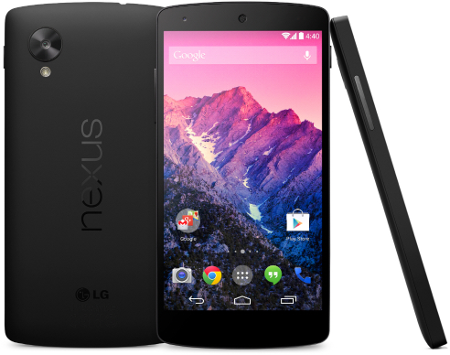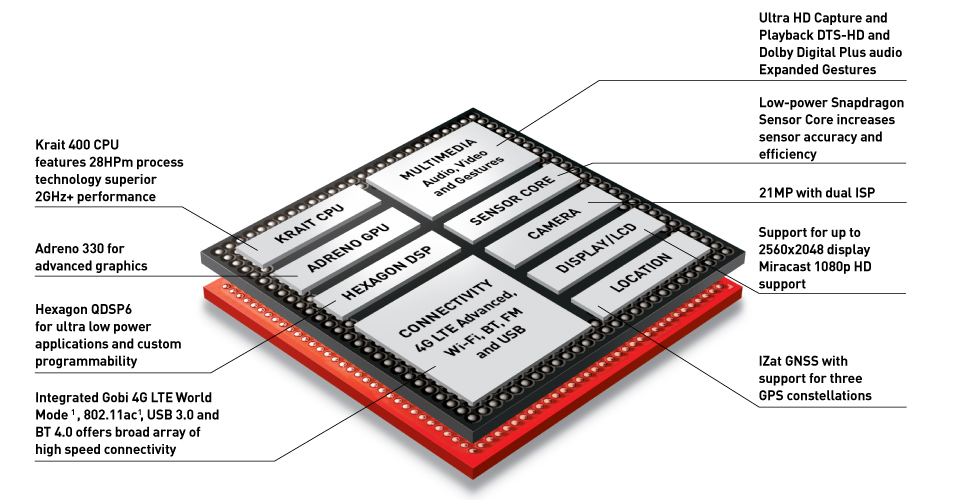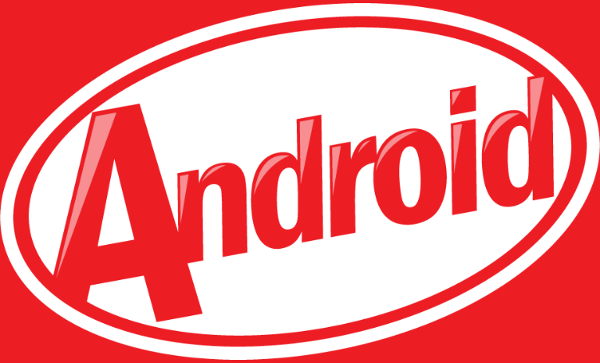Google Nexus 5 Review: A Fast, Affordable Phone With LTE For All
There's a new flagship smartphone in town. The LG-made Nexus 5 offers a fast Snapdragon platform, LTE for all markets, a 5” 1080p display, and Android 4.4 “KitKat”. Best of all, the 16 GB model sells for just $350 off-contract. Is it too good to be true?
Redefining The Android Experience With Google's Nexus 5

Last year was an important one for Android. We saw the platform shift from around 50 percent market share to over 80. Meanwhile, the leading Android-based devices enjoyed big improvements to performance and functionality. Google's Nexus 5 seems to be the very embodiment of Android's progress.
Indeed, this is a very progressive device. Priced at just $350 off-contract for the 16 GB model, the Nexus 5 (made by LG) really does seem unbeatable. A lot of that is attributable to the phone's formidable specs, including a Qualcomm Snapdragon 800 at 2.3 GHz with Adreno 330 graphics (450 MHz) and 2 GB of LPDDR3-1600. As far as performance goes, that's a very modern platform on which to build a phone, and we've already seen it used in much more expensive devices like Samsung's Galaxy Note 3 and LG's G2 (on which the Nexus 5 is mostly based). Oh, and take note that both of those phones sell for approximately $650 off-contract.

The Nexus 5 differs from its more premium brethren in two key areas: it lacks SD card support and it comes equipped with a smaller battery. Google's offering has a 2200 mAh power source, while the G2 and Galaxy Note 3 have larger 3000 mAh batteries. The other two handsets also support SD cards. However, the lack of expandable local storage is a constant across the Nexus devices; Google tends to favor cost savings over expandability, and likely prefers its customers to use the company's cloud-based services to alleviate the need for local data.
What we have, then, is a Nexus device that should equal its premium competition in terms of performance at almost half of the cost. We're putting our Nexus 5 through its paces to see if that turns out to be true. But first, let's absorb a little history.
The Predecessor: Google Nexus 4
Google's previous flagship smartphone, the Nexus 4, represented Android's shift in dominance. It was less of a mid-range device like previous Nexus phones, and instead offered almost bleeding-edge capabilities. It also showed the direction Google wanted to see Android developers going, using a quad-core SoC from Qualcomm to facilitate great performance in the heavily hardware-accelerated Android 4.2 Jelly Bean.

Oh, that's right. Jelly Bean was a big draw in and of itself. Android 4.2 crystallized many of the promises Google made since the launch of Ice Cream Sandwich, particularly on the performance and smoothness fronts. Core to this was Project Butter, which addressed the fluidity of on-screen animations and improved the responsiveness of touch input. Suddenly, Android-based devices were offering a user experience that felt a lot more like the polished iOS.
Although it was based on LG's Optimus G, the Nexus 4 lacked one significant feature compared to the LG-branded handset: full-band LTE support. Sure, LTE could be enabled with some finagling for some customers, but it was eventually patched out by Google (likely to appease carriers that wanted to reserve LTE for premium devices), making it pretty clear that LTE was never meant to be used on the handset in the first place. It was one major compromise Google had to make in order to keep the Nexus 4 affordable. After all, LTE broadcast licenses aren't cheap.
Stay On the Cutting Edge: Get the Tom's Hardware Newsletter
Get Tom's Hardware's best news and in-depth reviews, straight to your inbox.
Buyer's were left to consider leading-edge hardware and software in an off-contract handset at a fair price, but no LTE...
Vigorous debate sprung up about the merits of LTE, and many customers showed favor to the Nexus 4's incredible value and other leading edge features. The sold-out Nexus 4 may have even put a dent in LTE adoption over the shorter term. Indeed, in 2013, LTE meant choosing between an expensive off-contract phone or a cheaper on-contract device. But the Nexus 5 changes that situation, and we cannot overstate the significance of this moving forward.
LTE
The Nexus 5 includes LTE support for everyone, and it's sold in two variations to offer LTE in every market supporting the standard. This is likely made possible by Android's substantial market lead. You see, there's less of a risk for Google in paying the LTE license fees upfront because the company will reap the rewards in Play store commerce.
Offering LTE in such a premium device at such an affordable price means that the Nexus 5 will raise expectations of what is and isn’t acceptable in a sub-$400 off-contract handset. And that's a big deal. In the same way the iPhone changed the nature of touch interfaces from curiosity to necessity, the Nexus 5's presence means that future customers won't have to debate price versus performance when it comes to LTE. They will just expect it, and be disappointed when it's not included.
But there's a lot more to the Nexus 5 than just LTE for everyone...
Snapdragon 800
Beyond its cellular connectivity, the Nexus 5 is meaningful for sporting the fastest Android-compatible SoC in 2013, Qualcomm's Snapdragon 800. At almost 2.3 GHz, its Krait 400 cores represent a significant speed-up compared to the APQ8064's 1.5 GHz Krait 200 architecture.
The fact that Google's sub-$400 Nexus 5 has this SoC comes as somewhat of a surprise considering that quite a few premium Snapdragon 600-based phones were released only a few months prior. When the Nexus 5 launched in late October, it became one of the first widely available Snapdragon 800-based devices in the U.S. market. Putting such a premium SoC in this phone means no performance compromises were made. Apparently, Google wants its customers to experience the very best that Android has to offer on the company’s own branded line of devices.

On paper, the Snapdragon 800 SoC offers a lot potential performance. Some of this is related to hardware accelerators, but the Adreno 330 graphics core is largely responsible for its alacrity in games. Nvidia's Tegra K1 has us talking about a future with console-quality games on smartphones, but at least today, titles written for Android run very smoothly at maxed out quality settings on the Adreno engine. Recent releases like Asphalt 8: Airborne, Riptide GP 2, and Grand Theft Auto: San Andreas run exceedingly well at maxed out settings, while slightly older games like Real Racing 3, Shadowgun, and Riptide GP appear smoother than ever. I was frankly quite surprised at the improvement, having previously come from a Xiaomi MI-2 with its Snapdragon S4 Pro/Adreno 320 SoC.
Android 4.4 KitKat: Project Svelte
Speaking of performance, the other really significant feather in the Nexus 5’s cap has to be Android 4.4 KitKat’s Project Svelte.

What Project Butter did for UI performance in Android 4.2, Project Svelte does for memory efficiency in KitKat; it essentially halves the memory footprint compared to previous versions of Android. In day-to-day use, that manifests as smoother app switching and more apps open at the same time with less impact on performance than before.
Current page: Redefining The Android Experience With Google's Nexus 5
Next Page Product 360: Look And Feel-
guvnaguy Nice review. I think the whole $600-700 price for an off-contract phone is pretty much theft anyway, when the phones cost <$300 to make. Kudos, Google.Reply -
MoulaZX The Nexus 5 is extremely susceptible to thermal throttling which this article seems to gloss over or entirely miss.Reply
Yes PVS scores do indicate something. They indicate the efficiency of a chip at a given frequency. The lower PVS numbers will heat up faster, and thus be at the optimal 2.23Ghz frequency less often, thus giving the perceived impression of being significantly slower.
I have a Nexus 5 myself, same PVS scoring (1). Running Antutu in my hand, and I'll score 22,000 - 23,000. However, out of curiosity, I rest the phone on an AC vent for 15 minutes, started the Antutu benchmark while leaving it there, and managed to score 29,500. All results easily and consistently repeatable. And my phone has never been unlocked/flashed. 100% Factory ROM, 4.4.2.
The issue purely heavy thermal throttling under heavy sustained loads.
In day to day operations though, it is absolutely flawless, and felt ever so slightly snappier then my previous HTC One (M7). Still incredibly happy with this device, and the only one I have never felt the need to unlock and flash silly. My only gripe was Camera issues, but the 4.4.2 update resolved those problems. -
beetlejuicegr So a friend bought Nexus 5 and i bought his nexus 4 for me. Really happy with it even if its a last year's mobile. Economy crisis in Greece just won't give me space to buy Nexus 5 :P. Nexus phones are always on the the top list in quality and especially on price/quality mark. It is just that the way google sells them in Europe that is incompatible with the mentality of mobile buyers here. I bet my right thumb :P that if they had few actual shops inside shopping centers in Europe that they would sell like crazy. Now that i think about it, they know it, they just let other mobile companies for this, for android dominance perhaps? Just like what IBM did with PC and DoS? All were awed to see my Nexus One just when it was released few years ago, which i still have and still works fine, i doubt if an iphone or any 600+ $/euro mobile can survive that long right?Reply -
beetlejuicegr Oh and to add, this heating throttling might be annoying if it is used on a warm country like Greece i guess? Can the article elaborate on that? (room temperatures vs performance)Reply -
davidjan Great phone. N4 doesn't support OTG. But N5 supports. So can use Meenova MicroSD reader to add its storage: http://goo.gl/2iJ6gfReply -
clownbaby I finally pulled the trigger on a Nexus 5 and am upgrading my trusty old GNex. The unpolluted android system is by far the most underrated aspect of the Nexus devices. Paired with a crazy enthusiastic development community, Google offers a device experience that can't be had for any price by other manufacturers. To all of this, top end quick hardware is just icing on the cake. I would take a Nexus device with half the performance of an Iphone or Galaxy 4 just for the software environment.Reply -
yasamoka The LG G2 does not have a microSD slot. Only the Note 3 does out of the 3 handsets mentioned in the article.Reply